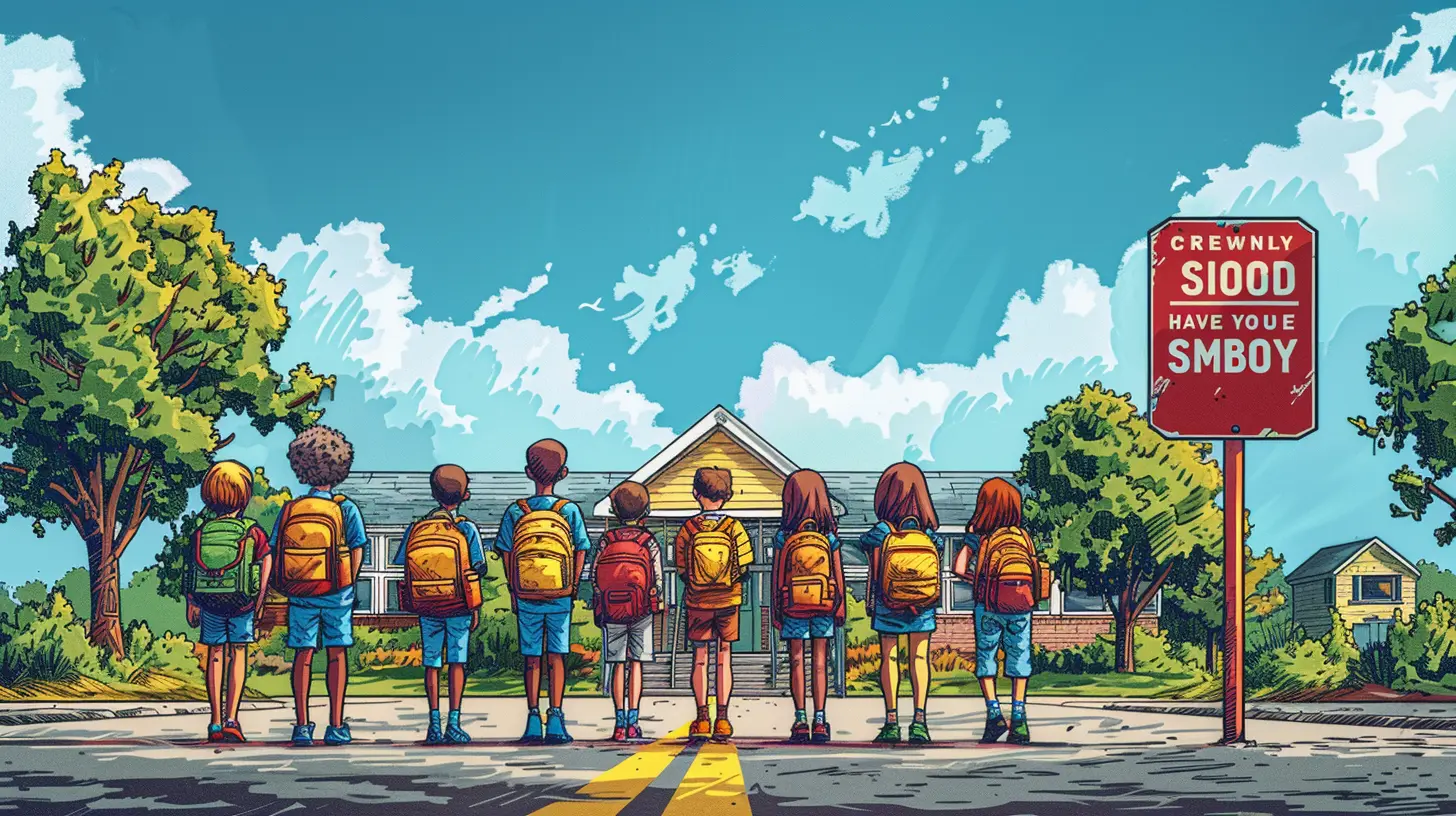Creating a Bully-Free School Zone: A Collaborative Approach
19 June 2025
Let’s be honest—school should be a safe space for every student. A place where curiosity thrives, friendships grow, and learning feels exciting, not stressful. However, when bullying enters the equation, it messes everything up. The classroom becomes a battleground, recess turns into a source of anxiety, and students start to dread showing up.
But here’s the good news: We can change that narrative. Creating a bully-free school zone isn’t just a pipe dream. It’s totally achievable when everyone gets involved—teachers, parents, students, and the community. So, pull up a chair, grab your favorite cup of something warm, and let’s talk about how we can make our schools kinder, safer, and bully-free.
Understanding the Real Impact of Bullying
Before we dive into solutions, let’s zoom in on the problem.Bullying isn’t always as obvious as a playground fight. It comes in different shades—verbal, emotional, physical, and digital (the dreaded cyberbullying). Some kids might face name-calling and exclusion, while others experience threats or online harassment.
But what’s worse? The long-term effects. Victims of bullying often deal with anxiety, depression, low self-esteem, and in some severe cases, thoughts of self-harm. That’s not what we want for our kids. Not even close.
And let’s not forget: bullies themselves often struggle with emotional issues or difficult home environments. Sometimes, they need help just as much as their victims.
Schools Can’t Do It Alone (And That’s Okay)
It’s tempting to think that schools alone should handle bullying. After all, kids spend a huge chunk of their day there. But expecting teachers and administrators to eliminate bullying singlehandedly is like asking a single lifeguard to watch 500 swimmers—it’s just not realistic.The truth? It takes a village.
A bully-free school zone is everyone’s job. Parents, teachers, students, bus drivers, lunch aides, counselors, even the community police officers. When everyone’s on the same page, real change happens.
The Power of a Collaborative Approach
Now let’s dig into this idea of collaboration. What exactly does that look like?Imagine building a house. Each person brings their own tools. The architect doesn’t do the plumbing, and the plumber doesn’t design the walls. But together, they create something strong and lasting.
Creating a bully-free environment works the same way. Each person plays a role. Let’s break it down:
1. Teachers: The Frontline Defenders
Teachers are often the first adults to see bullying happen. They’re in the hallways, classrooms, and cafeteria—right there in the thick of it.So how can teachers help?
- Set the tone early. A classroom culture where kindness and respect are non-negotiable goes a long way.
- Create open channels for reporting. Make sure students feel safe talking about issues—even anonymously.
- Implement SEL (Social-Emotional Learning) programs. These help students understand empathy, manage emotions, and build better relationships.
- Train and retrain. Teachers need ongoing training to identify both obvious and subtle bullying.
2. Parents: The Home Team
Parents are the original influencers. What kids learn at home often spills over into school. If respect and emotional intelligence are taught and modeled at home, it becomes second nature in school too.Here’s what parents can do:
- Listen more than lecture. Let your child talk about their day. Be curious, not judgmental.
- Know the signs. Anxiety, withdrawal, sudden fear of school—these can all be red flags.
- Stay engaged. Attend parent-teacher meetings, support school initiatives, and be involved in your child’s social life.
Remember, silence from your child doesn't always mean everything's perfect. It might mean they don’t know how to ask for help.
3. Students: The Game Changers
Here’s where the real magic happens. Peer influence is powerful. When students stand up instead of standing by, bullying loses its fuel.Students can be:
- Upstanders, not bystanders. Speaking up, supporting victims, and reporting incidents is courageous.
- Kindness warriors. Something as simple as a smile or a lunch invite can turn someone’s whole day around.
- Part of peer mentoring programs. Older students guiding younger ones can build lasting trust and protection.
When kids feel empowered to protect each other, they become the heartbeat of a bully-free zone.
4. School Administrators: The Change Architects
Policies and leadership matter—a lot.Administrators set the game plan. They can:
- Implement clear anti-bullying policies. Zero tolerance doesn't have to mean “everyone gets expelled.” It means everyone takes it seriously.
- Involve student voices. Let students help shape the code of conduct or create anti-bullying clubs.
- Create safe spaces. Counseling offices, mental health check-ins, and restorative justice circles can make a big difference.
With strong leadership, the entire school feels supported and protected.
5. Community Members: The Outer Circle of Support
Think beyond the school walls. Local businesses, police officers, religious leaders, and volunteers all play a role.- Sponsor anti-bullying campaigns.
- Host community events promoting inclusivity and respect.
- Provide resources like therapy options or safe places for after-school activities.
The message becomes even louder when it's echoed outside the school: bullying isn’t okay—anywhere.
Building a Culture, Not Just a Policy
Let’s be real for a second. Hanging posters around the school about kindness isn’t going to fix the problem. Policies alone don't create change—people and culture do.Here are a few culture-building strategies that actually work:
- Daily affirmations and positive reinforcement. Start each day with a message of encouragement.
- School-wide events like Unity Day or Kindness Week. Bring everyone together around a common cause.
- Celebrating inclusivity. Highlight stories of students who went out of their way to support others.
- Conflict resolution training. Teach kids how to solve problems without aggression.
Creating a culture takes time. But once it catches on, it becomes contagious—in the best way possible.
The Role of Technology: Friend or Foe?
Technology can be a double-edged sword. On one hand, cyberbullying is a serious issue. On the other, tech can also be used to spread kindness and awareness.Harness it for good:
- Encourage digital citizenship. Teach students how to navigate online spaces respectfully.
- Use anonymous reporting tools. Apps or hotlines can help kids speak up safely.
- Celebrate positivity online. Share stories of kindness and support through school social media accounts.
If we’re going to battle online bullying, we need to be just as tech-savvy as the bullies.
Empower, Don’t Punish
Punishment alone doesn't fix bullying. In fact, it often leaves bullies angrier and victims still afraid.Instead, focus on:
- Restorative justice. Allow victims and bullies to safely discuss the harm done and work toward resolution.
- Counseling instead of suspension. Understand the root causes and deal with them head-on.
- Giving second chances. Kids make mistakes. What matters is what they learn from them.
Empowerment leads to change. Punishment without understanding leads to resentment.
Long-Term Commitment: This Isn’t a One-Time Fix
Stopping bullying isn’t about creating a one-time program and calling it a day. Think of it more like a garden. You need to keep watering it, pulling out the weeds, and giving it sunshine.Here’s how to keep the commitment going:
- Annual check-ins and surveys. Measure progress and adjust programs.
- Ongoing training for staff and students.
- Involving new students and parents every year. Make the culture welcoming from the start.
Consistency is the secret sauce.
Final Thoughts: We’ve Got This—Together
There’s no magic wand to eliminate bullying overnight. But when we stand together, listen to each other, and lead with empathy, we can build school zones where joy is louder than cruelty and kindness is cooler than teasing.Let’s raise kids who don’t just look out for themselves but look out for each other too. It’s not just about stopping bullies—it’s about creating communities where bullying simply doesn’t fit in.
So, what role will you play?
all images in this post were generated using AI tools
Category:
School SafetyAuthor:

Bethany Hudson
Discussion
rate this article
1 comments
Arianth Baxter
This article emphasizes the importance of community involvement in fostering a bully-free environment. By encouraging collaboration among students, parents, and educators, we can create a supportive space where every individual feels safe and valued.
June 21, 2025 at 2:23 AM

Bethany Hudson
Thank you for your insights! Community involvement is indeed crucial in building a supportive and safe environment for all students.


